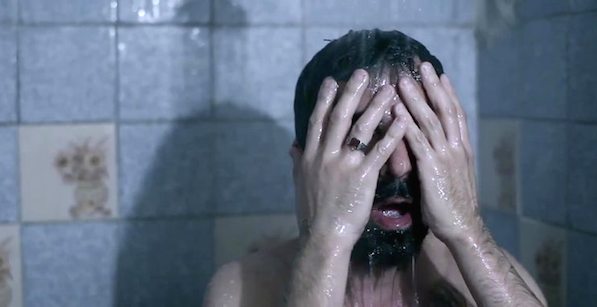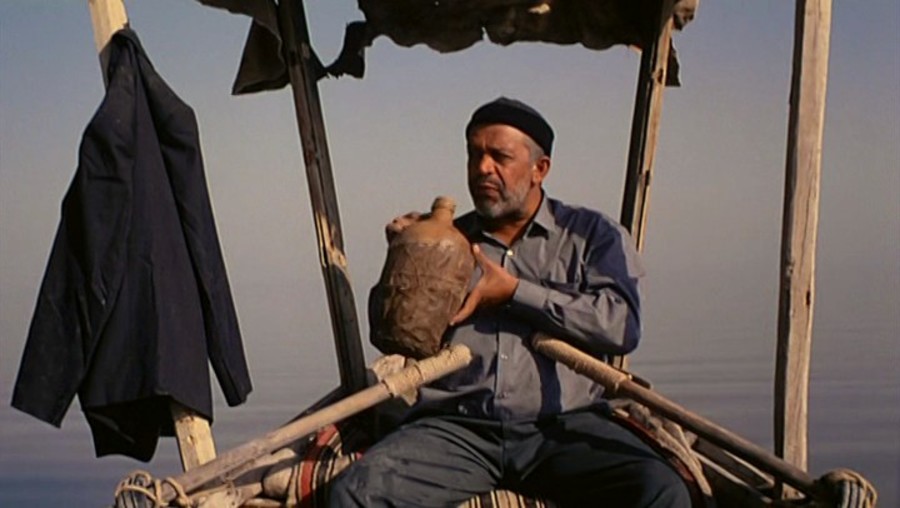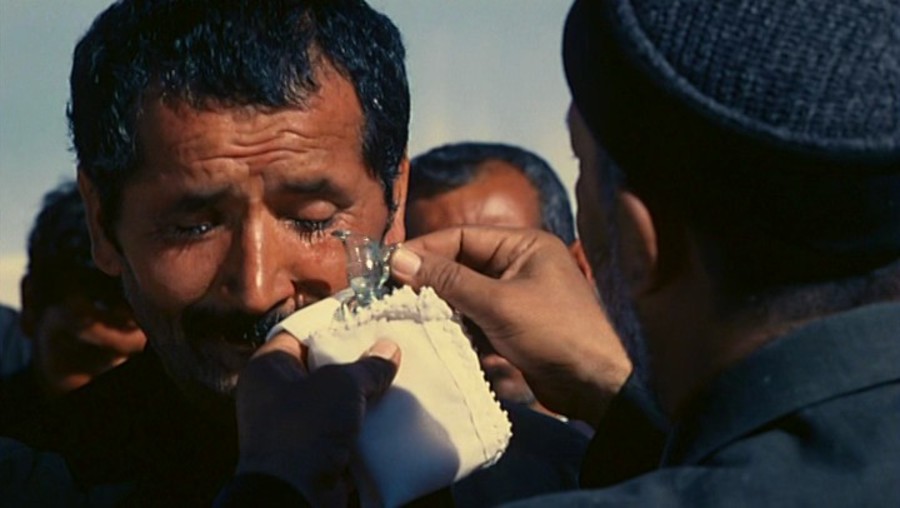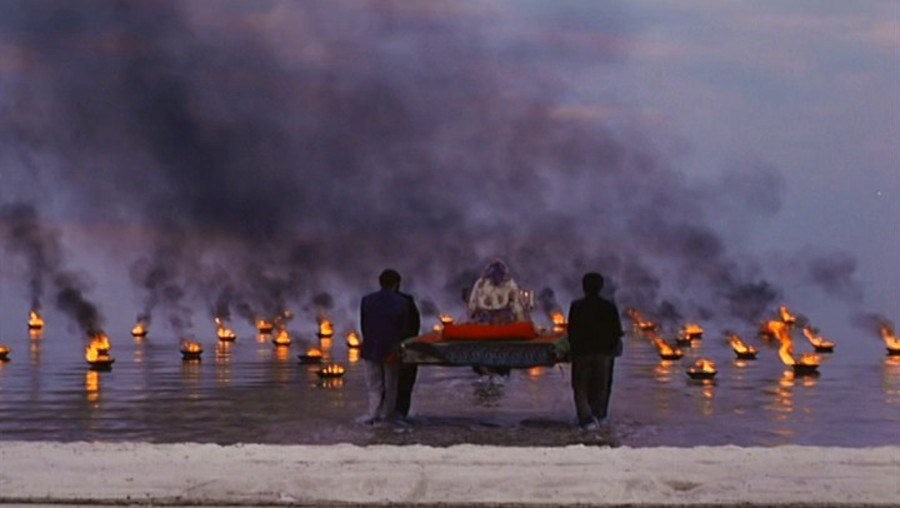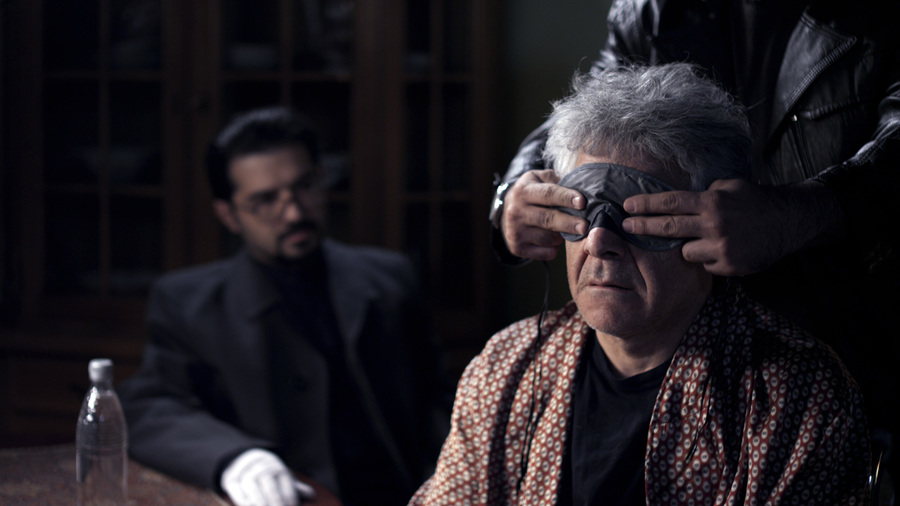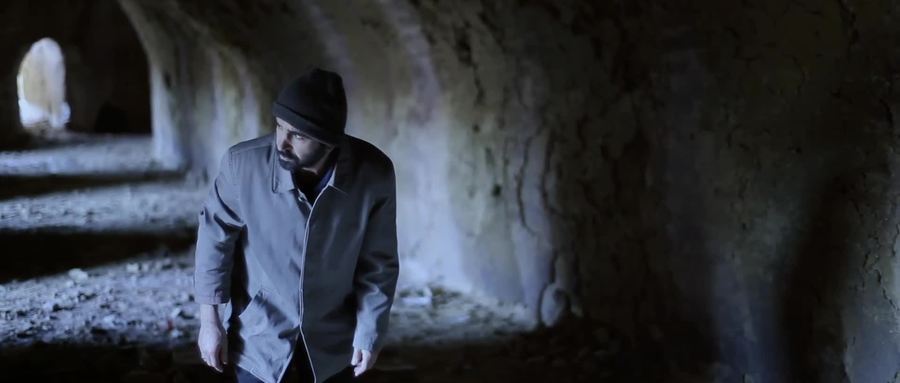Mohammad Rasoulof is the very model of the filmmaker as defiant activist, an Iranian artist who confronts injustice and repression through his cinema knowing full well the consequences of such an act.
In the 1990s, when Iranian cinema first broke out of film festivals and museum programs and started appearing in arthouses, filmmakers like Abbas Kiarostami and Jafar Panahi worked within the severe government-imposed limitations on subject matter (everything from politics to physical contact between the sexes) by focusing on films about children and rural life. Other filmmakers hid messages and social commentary in genre trappings and metaphor.
With The White Meadows (2009), Rasoulof confronted Iran’s oppressive culture through the metaphor of a surreal and savage Gulliver’s Travels journey, an allegory that was not lost on audiences. The next year he was arrested, along with fellow cinematic rebel Jafar Panahi. And like Panahi, he responded with another cinematic provocation. The even more audacious Manuscripts Don’t Burn (2013) strips away the metaphor to portray Iran’s government as an authoritarian regime in direct, confrontational terms. These two films are among the most daring—and the most powerful—Iranian films of the past few decades.
The white meadows of The White Meadows are the desert islands in the salt marshes of Iran’s Lake Urmia. The salt that coats every beach white has transformed the islands into bare, bleached bones of a dead giant, giving it an almost alien, otherworldly atmosphere: a visit to a small planet. And just as the salt chokes the life out of the land and water (there are no birds and precious little marine life), so does it starve the respective cultures, cut off from the rest of the world but for a boatman, Rahmat (Hasan Pourshirazi), the only outsider welcome in these lands. He is the “tear collector,” who comes to hear their woes and take away their sorrows by collecting their tears in a glass vial.
It’s a stunning and startling odyssey through what could be medieval cultures preserved in isolated pockets on otherwise dead lands. The mythology and cultural practices are more fictional creation than historical reality but they have the resonance of myth playing out in a place that is, practically speaking, out of time, with only stray clues placing it in, more or less, the present. Brutal rituals (human sacrifice, politely referred to as a “marriage” and treated as a holy honor by all but the virgin bride) and punishments abound, and a culture of conformity and intolerance rules, maintained by an unquestioned patriarchy that keeps the culture locked in a surreal state of blind obedience bordering on madness. Rebels, be they runaways, heroes or artists with individual visions, don’t survive the smothering culture.
Though couched in metaphor, Rasoulof hides nothing in this film. The brutally beautiful satire of authoritarianism, religious extremism, unquestioning conformity and intolerance for anyone who dares question any of it is inseparable from the mad mythos of this odyssey. And yet the simplicity of his filmmaking, his screen carved down to the most primal imagery of black-clad figures on a stark dirty white landscape and the stories delivered as folk tales in a ferocious world, gives his mythology an authenticity in isolation as well. It’s simply up to the audience to make the (unavoidable) connection between his surreal portrait and life in Iran. Which Iranian authorities clearly did.
Rasoulof was arrested in 2010 and sentenced to six years in prison (which would be later decreased to one year) and banned from filmmaking for twenty years. While awaiting appeal on bail, he made the 2013 thriller Manuscripts Don’t Burn, which stripped away metaphor to put its portrait of authoritarian oppression out in the open. “Metaphor and allegory and the lyrical element of my tone were influenced by the old poetic traditions (which, themselves, were in turn affected by the constraints of their time),” Rasoulof explained to Fandor’s Jonathan Marlow. “At first, I didn’t want to face the regime head-on and to enter into an adversarial relationship. But they themselves picked a fight.”
We open on a contract murder that plays like an American gangster picture dropped into dusty slums outside Tehran. These aren’t government agents, they’re simply men working in the margins of government work-for-hire, doing the dirty work for the vindictive minister of the security services. Yes, it’s for the money; one man needs the job to pay for his son’s operation (it’s not a corny as it sounds) and is constantly stopping along the route to see if the money has reached his account. These interruptions keep the political horror story rooted within the banalities and anxieties of everyday life. They also remind us that there are real people carrying out these actions, something that hit home for Rasolouf when he was imprisoned and faced his jailers on a daily basis. “It is there that I understood that even the people working for the security apparatus are just like you and me,” shares Rasoulof. “Some of them had this belief that what they were doing was right. Some just saw themselves as employees following orders.” These men don’t get any enjoyment or satisfaction in their work, but neither do they find it particularly distasteful. There’s may even be a hint of resentment of this intellectual class.
Manuscripts Don’t Burn takes a circuitous route through the workings of a totalitarian state that intimidates and terrorizes its intellectuals and dissident writers and it winds through a web of writers connected by censored and suppressed works, some of whom have lost their stomach for protest long ago. It can get a bit confusing, with characters who appear without introduction and a campaign of intimidation that isn’t immediately clear, but the confusion sorts itself out as the intimidation turns into outright terrorism. It’s 1984 by way of The Godfather as reimagined by Kafka, while an inspired formal twist puts the whole ordeal on continuous loop, a cycle of never-ending despotism.
There are also echoes of The Lives of Others in the routine surveillance of citizens but this is more confrontational and brutal and Rasoulof hasn’t the safe distance of exploring a fallen regime. His targets are current and he puts a target on his chest for his efforts. For that reason, he’s the only artist on the film who takes credit; the other names are hidden for fear of reprisals (we assume the actors are expatriates safely out of country). The film was, of course, banned in Iran and Rasoulof (against the advice of friends) returned home to Iran after premiering the film at Cannes (where it won the FIPRESCI Prize). His passport has been revoked and he is unable to see his family, whom he has already moved out of country. And a prison sentence still hangs over his head. His position isn’t all that different from the aging dissidents of Manuscripts Don’t Burn, who face government retribution for protest acts from long ago, living in the shadow of an unspoken sentence that will someday be carried out, depending on the whims of whoever is in power. The difference is that, with the election of Hassan Rouhani as President of Iran, Rasoulof has reason to hope for change and the determination to be part of the reform.
To date, none of Rasoulof’s films have been released in Iran.

